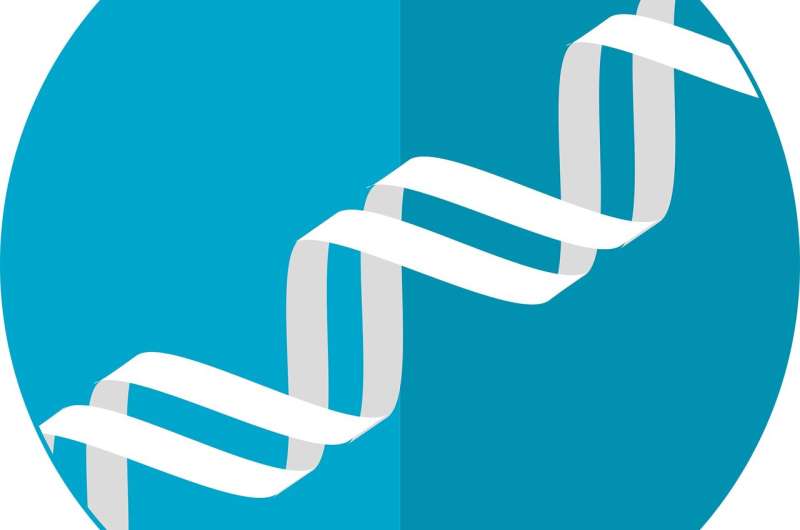
The causes of autism remain mysterious. Scientists have linked autism spectrum disorder to a long list of genes, but most children with autism have no known explanation. Two new studies add to the picture, implicating mutations that affect only a fraction of a child’s cells. Called mosaic mutations, they open a new avenue for research and could eventually become part of diagnostic testing for children on the autism spectrum.
Unlike mutations passed down from a parent, mosaic mutations arise after conception, when stem cells are dividing in the embryo and DNA is being copied from cell to cell. A mutation in a stem cell is passed only to the cells that descend from it. This produces a mosaic pattern, which is how these mutations earned their name. The earlier in development a mutation happens, the more cells ultimately carry it, sometimes including cells in the brain.
Tracing mosaic mutations in the brain
The two studies, published Jan. 11 in Nature Neuroscience, document two kinds of mosaic mutations in people with autism. The first study, led by Drs. Rachel Rodin and Christopher Walsh of Boston Children’s Hospital and Drs. Yanmei Dou and Peter Park of Harvard Medical School, looked at point mutations, which affect a single “letter” of the genetic code.
The researchers obtained brain tissue from 59 deceased people with autism spectrum disorder and 15 controls—the largest set of such samples ever studied. They then sampled multiple brain cells and sequenced each cell’s entire genome.
It turned out that most of the brains had point mutations in a mosaic pattern. In fact, the team estimates that about half of us carry mosaic mutations in at least 2 percent of our brain cells.
But in people on the autism spectrum, the mosaic mutations tended to land in special portions of DNA known as “enhancers.” These are key to the functioning of brain cells because they regulate whether a gene is turned on or off.
“In the brains of people with autism, mutations accumulate during development at the same rate as other people’s, but they are more likely to fall into an enhancer region,” explains Dr. Rodin. “We think gene enhancers are more susceptible to mutations during cell division in the embryo, because they tend to be in DNA that’s more physically exposed.”
Dr. Walsh, who is chief of genetics and genomics at Boston Children’s, is interested in better understanding how mutations in DNA enhancers affect brain cells.
“These are a hidden kind of mutation that you don’t see in typical diagnostic sequencing, and it may help explain autism in some people,” he says.
Mosaic deletions and duplications
The second study was the first large-scale investigation of mosaic copy number variants (CNVs) in children with autism spectrum disorder. CNVs are rare mutations in which whole chunks of a chromosome—often containing multiple genes—are deleted or duplicated.
A team led by Dr. Walsh, Dr. Park, and Maxwell Sherman and Dr. Po-Ru Loh of Brigham and Women’s Hospital looked for mosaic CNVs in about 12,000 children with autism and 5,500 unaffected siblings. Instead of brain tissue, they studied blood samples from the large Simons Simplex Collection and SPARK datasets.
Cutting-edge data-crunching techniques helped the team detect mosaic mutations that likely originated during embryonic development. A handful of these were mosaic CNVs, affecting as few as 3 percent and as many as 74 percent of the blood cells sampled from each child.
Size matters
The children with autism spectrum disorder were especially likely to have very large CNVs, some involving 25 percent or more of a chromosome.
“This is one of the more surprising aspects of our study,” says Sherman, a Ph.D. student at MIT. “These very large CNVs often hit dozens of genes, and likely included genes important in brain development.”
The findings suggested that the larger the CNV, the greater the severity of autism. Another surprise: smaller CNVs known to cause autism spectrum disorder when they affect all cells (like 16p11.2 or 22q11.2 deletions/duplications) didn’t seem to be associated with autism when they occurred in a mosaic pattern.
“This suggests that in order for a child to have autism, large number of cells in the brain need to be affected in a pretty substantial way,” says Walsh.
A change to future testing?
More research is needed to understand what these large CNVs do to brain cells, what fraction of cells would need to be affected to lead to autism, and which chromosomes are most susceptible to CNVs.
Based on the findings of these studies, diagnostic testing in children with autism could eventually incorporate searches for mosaic mutations and CNVs. For now, the findings deepen the mystery of why so many different genetic paths can lead to what we recognize as autism.
Children’s Hospital Boston

